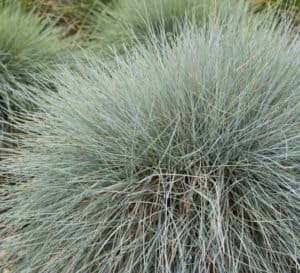By Kimberly Toscano
When I plant a barberry in the landscape, I know what to expect. Barberries have proven themselves time and again as dependable, adaptable shrubs, and ‘Orange Rocket’ is no exception. It’s as low-maintenance, deer resistant, and virtually indestructible as any barberry. That’s why plant breeders often revisit old standbys like the humble barberry, but in the process they also introduce something entirely new.
With ‘Orange Rocket’ Barberry that “something new” is a trait widely sought after for modern gardens – narrow, upright growth. Ultimately reaching 4 to 8 feet tall, but only 2 feet in width over 10 years, ‘Orange Rocket’ provides a tight, vertical element to meet your design needs.
Why Use Vertical Plants in Your Garden?
Vertical lines provide strength and movement to a garden. Vertical forms are often used as accents because they break up horizontal lines that can unintentionally carry the eye straight through a garden. Instead, vertical lines slow the movement of the eye, allowing viewers to take in more of the landscape.
Vertical accents also draw the eye upward, and can be used to terminate sight lines. Finally, vertical hedges can be used to separate garden rooms and create a sense of enclosure or intimacy.
Designing with ‘Orange Rocket’ Barberry
‘Orange Rocket’ Barberry offers more than simply vertical structure. Unique foliage color provides contrast to surrounding plants. The combination of bold form and vibrant color yields a strong accent for containers or beds that fits myriad design styles.
When it comes to plant pairing, the rich ruby foliage combines with green, yellow, blue, silvers and plums for endless planting options. The following combinations take advantage of contrasts in color and texture.
Formal Settings
The small, deep green leaves of Baby Gem™ Boxwood contrast nicely with the vibrant foliage of ‘Orange Rocket’. For a dramatic entry, repeat the vertical lines of ‘Orange Rocket’ along the length of a drive or walkway.
Oranges and Lemons
The warm color combination of ‘Orange Rocket’ Barberry with Miss Lemon™ Abelia is simply stunning. For an even livelier combination, try pairing with the golden-hued ‘Sunshine’ Ligustrum.
Silvers and Blues
Blue-hued evergreens are a common pairing with barberry, but why not shake things up with Beyond Blue™ Festuca? Or, select an edible partner such as Chef’s Choice® Rosemary, which delights with violet-blue spring flowers and silver-tinged foliage.
Looking for other plant pairing ideas? Browse our collection – its diverse selections and unique varieties offer countless ways to revitalize the landscape.














